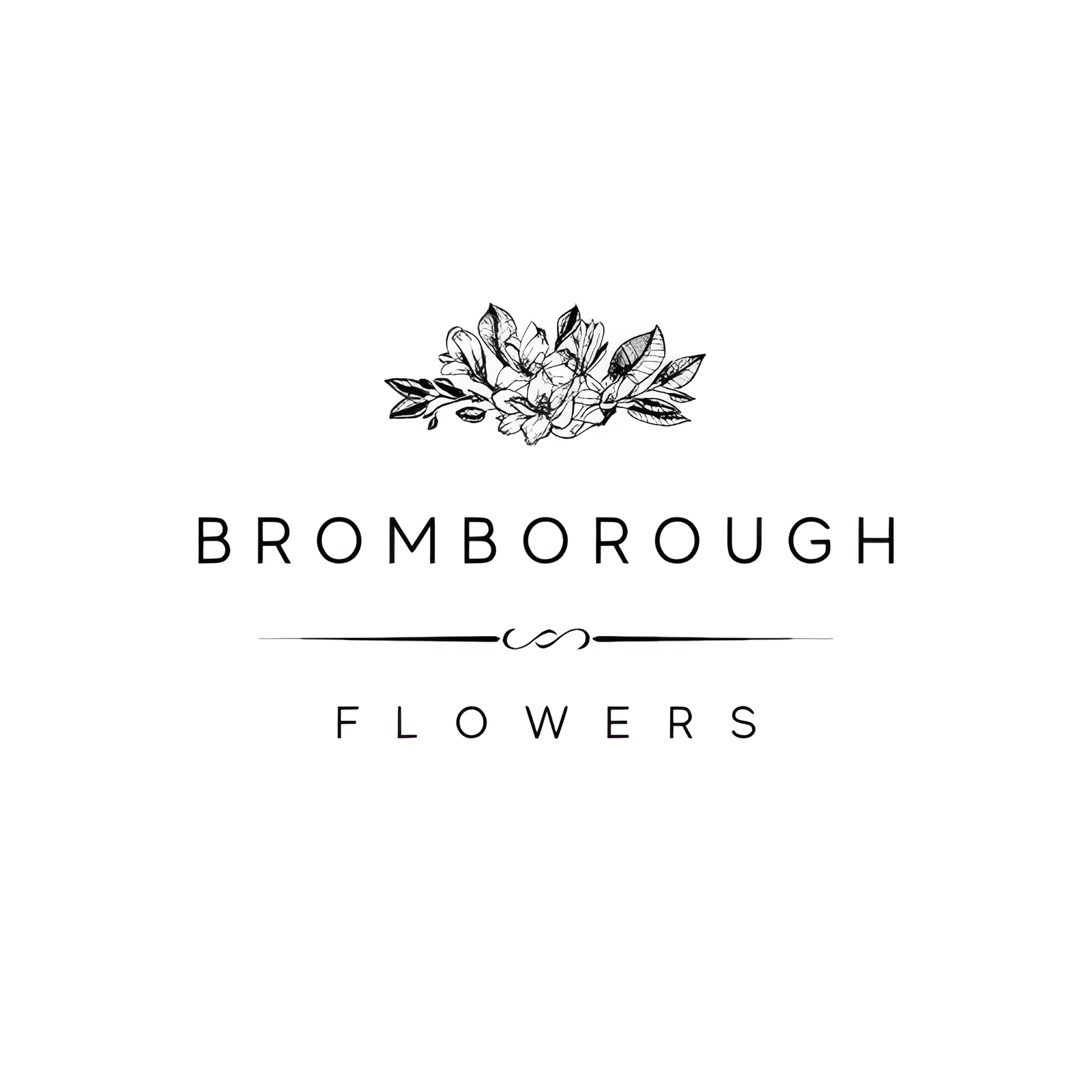The Forsythia flower, characterized by its vibrant yellow, bell-shaped blooms, is a striking addition to any wedding décor, symbolizing happiness and new beginnings. Its early spring flowering and arching growth habit create enchanting backdrops, particularly for outdoor ceremonies. Not only does Forsythia add a pop of color and texture, but it also pairs seamlessly with other flowers like sweet peas and garden roses. As we explore the multifaceted aspects of Forsythia, from its botanical origins to its cultural significance, you'll discover how this versatile flower can elevate your wedding arrangements.
Flower Overview
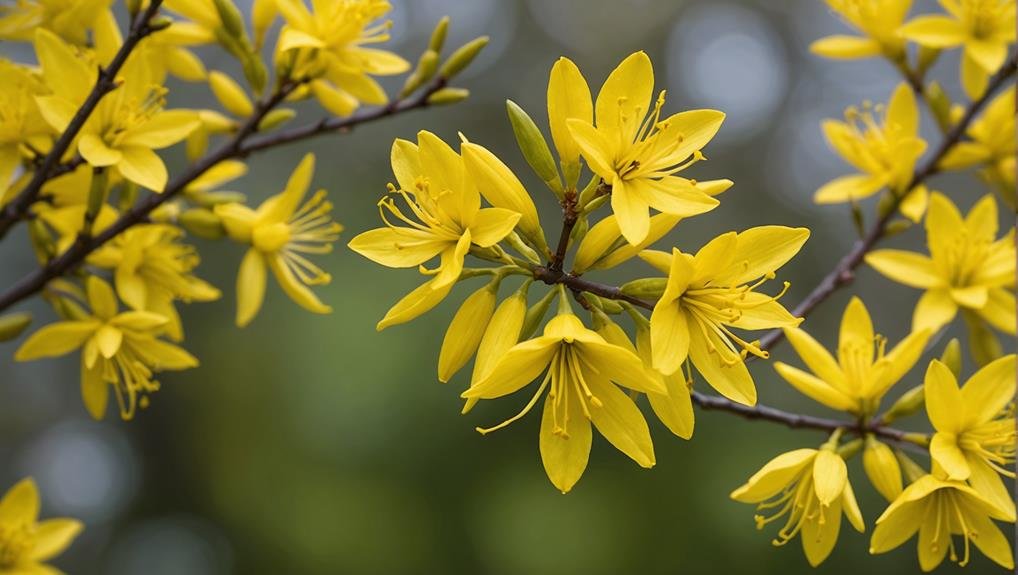
Forsythia, a deciduous shrub known for its vibrant yellow, bell-shaped flowers, blooms in early spring and is prized for its bright and cheerful appearance. This flowering shrub, native to East Asia, is a popular choice for various special events, particularly weddings, due to its symbolic significance and aesthetic appeal.
The early bloom of Forsythia, often appearing before the leaves, marks the onset of spring and is widely regarded as a symbol of new beginnings. This characteristic makes it an ideal selection for wedding flowers, embodying the fresh start that marriage represents.
Incorporating Forsythia into floral arrangements offers a striking visual element that can enhance the overall ambiance of wedding ceremonies and receptions. Its vivid yellow flowers add a splash of color, uplifting the mood and creating a lively atmosphere. The bell-shaped blooms of Forsythia are versatile and can be used in various types of arrangements, from bouquets to centerpieces, adding a touch of elegance and brightness.
Florists often utilize Forsythia to create dynamic compositions that celebrate the joyous occasion of a wedding. Its association with anticipation and renewal makes it a meaningful addition to any wedding, symbolizing the promise of a new journey together.
Physical Description
Characterized by its vibrant yellow, four-petaled flowers, this deciduous shrub offers a striking visual display in early spring. Forsythia's flowers are bell-shaped and typically appear before the leaves, ensuring maximum visual impact.
The shrub grows to a height of 6-10 feet and features an arching, spreading growth habit, making it a versatile addition to both gardens and floral arrangements. Forsythia's leaves are simple, ovate, and arranged in pairs along the stem, adding to its overall aesthetic.
The bright and cheerful appearance of Forsythia makes it a popular choice for bridal bouquets, where it can offer a vivid contrast to more traditional elements like a rose bouquet or lily of the valley.
- Height: Typically grows between 6-10 feet.
- Structure: Features an arching, spreading growth habit.
- Flower Shape: Bell-shaped, four-petaled flowers.
- Leaf Arrangement: Simple, ovate leaves in pairs.
- Bloom Time: Early spring, often before the leaves appear.
Forsythia's striking yellow flowers and versatile growth make it an appealing choice for various floral arrangements, providing a unique touch to wedding decorations. Its ability to blend seamlessly with other flowers like roses and lilies of the valley makes it a valuable addition to any bridal bouquet.
Available Colour Varieties
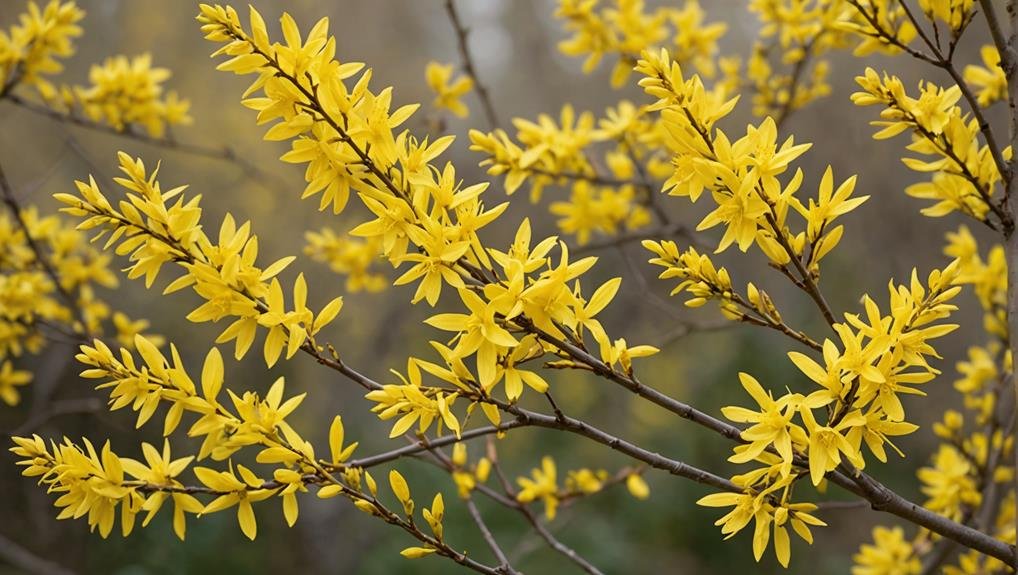
Although Forsythia is mainly known for its bright yellow flowers, some rare varieties exhibit shades of white or pale pink, offering a softer alternative for floral arrangements. These variations can provide a delicate contrast when paired with other wedding staples such as sweet peas and garden roses.
The vibrant yellow hue is symbolic of happiness, optimism, and new beginnings, making it a popular choice for spring wedding bouquets and centerpieces. The bright yellow flowers can add a pop of color and vibrancy, enhancing the overall aesthetic appeal of the arrangements. However, the rarer white and pale pink varieties can also contribute to a more subdued, elegant look for those seeking a softer palette.
| Forsythia Varieties | Characteristics |
|---|---|
| Bright Yellow | Symbolizes happiness, optimism, and new beginnings. Perfect for spring weddings. |
| White | Rare, adds a soft, elegant touch to floral arrangements. |
| Pale Pink | Rare, offers a delicate contrast. |
| Sweet Peas | Complements Forsythia with its soft texture and gentle colors. |
| Garden Roses | Adds richness and depth, enhancing the overall visual appeal. |
When strategically combined with other spring blooms such as tulips, daffodils, or lilacs, Forsythia flowers can elevate the beauty and vibrancy of a wedding floral arrangement.
Latin Name and Taxonomy
Beyond its appealing color varieties, Forsythia is scientifically known as Forsythia suspensa, a member of the Oleaceae family. This botanical classification places Forsythia within a group of flowering plants that includes olives and jasmines. Forsythia taxonomy is rooted in the work of Scottish botanist William Forsyth, after whom the genus was named. This naming history highlights the plant's long-standing significance in horticulture and botanical studies.
Forsythia suspensa, commonly referred to as the golden bell, is celebrated for its vibrant yellow flowers that herald the arrival of spring. The genus Forsythia encompasses approximately 11 species, each exhibiting variations in flower color and size, adding to its horticultural appeal. As a deciduous shrub, Forsythia sheds its leaves annually, contributing to its dynamic seasonal display.
To summarize the key points:
- Latin Name: Forsythia suspensa
- Family: Oleaceae
- Botanical Classification: Genus Forsythia, approximately 11 species
- Common Name: Golden bell
- Naming History: Named after Scottish botanist William Forsyth
This information underscores Forsythia's rich botanical heritage and the significance of its classification in the plant kingdom.
Geographical Origins
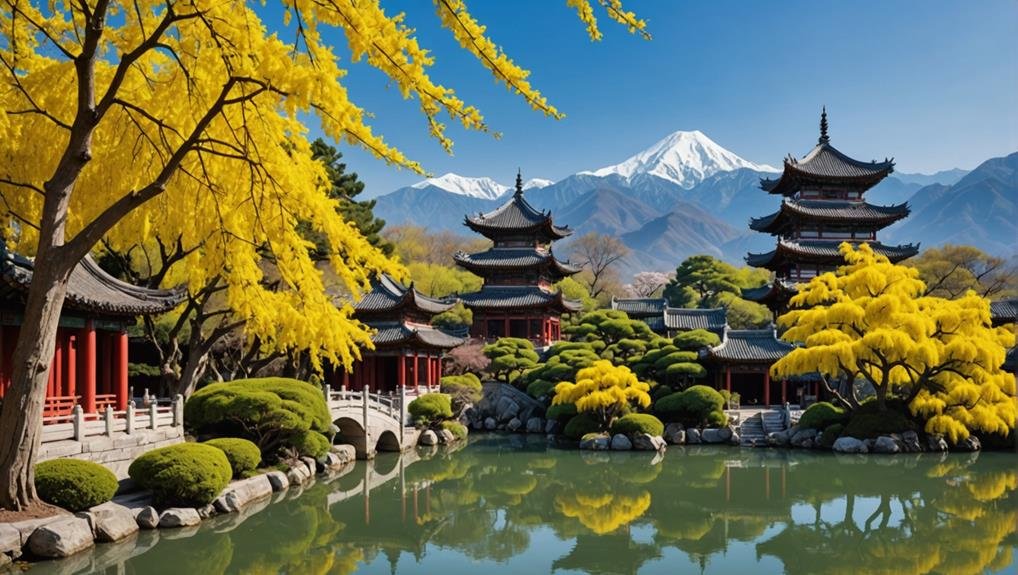
Forsythia, native to Eastern Asia, particularly China and Korea, thrives in temperate regions and is renowned for its early blooming period. This plant holds significant botanical importance due to its vibrant yellow flowers that herald the arrival of spring. Forsythia's natural habitat in East Asia has allowed it to adapt to various temperate climates, making it a versatile choice for gardens worldwide.
The following table highlights key aspects of Forsythia's geographical origins and its broader implications:
| Aspect | Description |
|---|---|
| Native Regions | Eastern Asia, especially China and Korea |
| Botanical Significance | Symbolizes anticipation and hope, marking the end of winter |
| Regional Adaptations | Thrives in temperate climates, widely cultivated in North America and Europe |
| Historical Cultivation | Named after William Forsyth, a Scottish botanist |
| Early Blooming Period | Late winter to early spring, adding early color to gardens |
Forsythia's historical cultivation dates back to its introduction to Europe, where it was named in honor of William Forsyth, a founding member of the Royal Horticultural Society. Over the centuries, Forsythia has been celebrated for its ability to brighten landscapes right after the cold winter months, showcasing its remarkable regional adaptations. This plant's widespread appeal underscores its enduring botanical significance and historical value.
Season Availability
During the early spring months, forsythia becomes widely accessible, offering a vibrant burst of yellow to floral arrangements and gardens. Typically blooming from late March to early April, forsythia's vivid yellow flowers announce the arrival of spring, making them a prominent feature in wedding arrangements and floral trends.
The seasonal presence of forsythia guarantees its freshness and vibrancy, which are highly desired in spring bouquets and event planning.
Incorporating forsythia into wedding arrangements provides a distinctive and eye-catching element, aligning with seasonal decor and garden inspiration. Florists and event planners often look to forsythia for its striking color and the revitalizing energy it brings to various settings.
Its brief blooming period adds an element of exclusivity, making it a coveted choice for those seeking to capture the essence of spring in their celebrations.
Growing Conditions
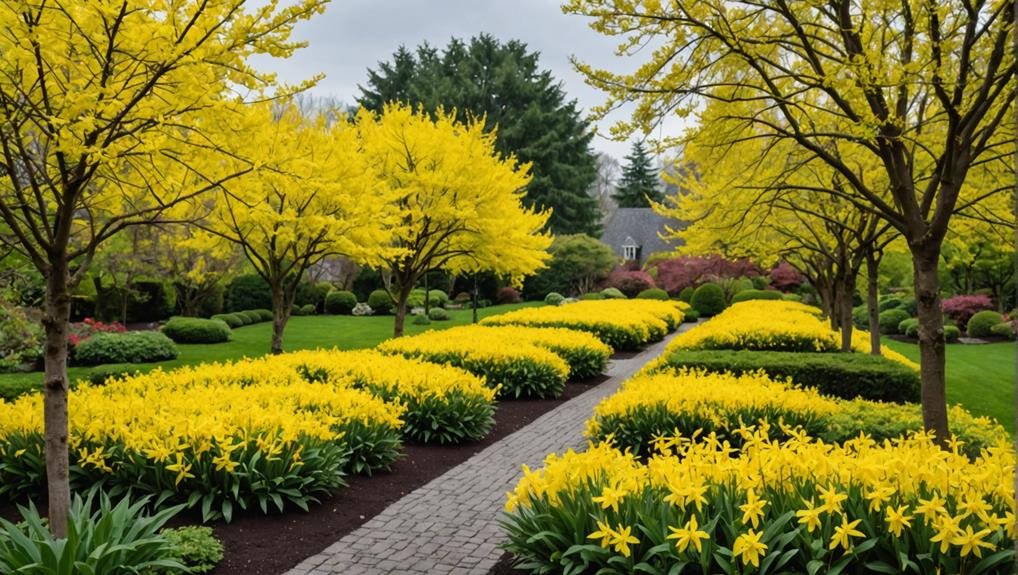
Understanding the ideal growing conditions for forsythia is vital to maintaining its vibrant and fresh appearance in wedding arrangements. Forsythia thrives in full sun to partial shade, making it a versatile plant for various garden settings. Its sunlight preferences guarantee that it can adapt to different locations while still producing its signature bright yellow blooms.
Forsythia prefers well-draining soil and can tolerate a range of soil types, including clay and loam. These soil requirements are essential for preventing root rot and other water-related issues. Concerning watering needs, regular watering is critical during the plant's establishment period. However, once established, forsythia exhibits considerable drought tolerance, making it a resilient addition to any garden.
Pruning tips are necessary for maintaining the plant's shape and encouraging new growth. It is advisable to prune forsythia after flowering to ensure it remains aesthetically pleasing and ready for the next growing season. Pruning not only helps in maintaining its shape but also stimulates growth encouragement, leading to a more robust and fuller plant.
Cultural Significance
Throughout various cultures, forsythia holds deep symbolic meanings that enhance its appeal in wedding floral arrangements. Known for its vibrant yellow blooms, forsythia is not just visually enchanting but also rich in cultural traditions and historical significance.
In Chinese culture, forsythia is often associated with anticipation and new beginnings, symbolizing good fortune and prosperity. This makes it an auspicious choice for wedding ceremonies, where the theme of a joyful and prosperous future is ever-present.
Similarly, in Korean culture, forsythia represents patience and understanding, serving as a reminder of the endurance needed during challenging times in a marriage.
The language of flowers further enriches forsythia's symbolic meanings, where it stands for excitement and the keen anticipation of joyful times ahead. This aligns perfectly with the sentiments surrounding weddings, making it a fitting choice for such celebrations.
Across various cultural traditions, the bright yellow hues of forsythia are often used to symbolize optimism, hope, and renewal.
- Anticipation and new beginnings in Chinese culture.
- Patience and understanding in Korean culture.
- Represents excitement in the language of flowers.
- Symbolizes optimism, hope, and renewal.
- Enhances the thematic elements of joyful and prosperous futures in weddings.
These rich symbolic meanings make forsythia a profound addition to any wedding celebration.
Typical Use in Weddings

Forsythia is a popular choice in weddings for its vibrant yellow blooms that bring a sense of anticipation and new beginnings to the celebration. Known for its cheerful color and symbolic significance, forsythia is often incorporated into a variety of wedding elements to enhance the overall aesthetic. Its branches are frequently used in decorative arrangements for outdoor ceremonies, adding a bright and natural touch to the setting.
In bridal bouquets, forsythia's vibrant yellow hue stands out, creating a striking contrast when paired with other seasonal flowers such as tulips, daffodils, and hyacinths. Ceremony backdrops adorned with cascading forsythia branches provide a whimsical and enchanting atmosphere, making the event even more memorable.
Forsythia is also a versatile option for reception decor. Its branches can be used in floral installations to create elegant arches or stunning tablescapes, contributing to a cohesive and cheerful design. Additionally, forsythia is a budget-friendly choice, allowing for lush and impactful displays without excessive cost.
Alternative Flower Types
Incorporating a variety of alternative flower types into wedding decor can often elevate the overall aesthetic and introduce unique elements to the celebration. Forsythia, with its bright yellow blooms, is an excellent example of such an alternative. Its symbolism of anticipation and new beginnings makes it particularly suitable for spring weddings. When used in floral arrangements, Forsythia adds both color and texture, creating a vibrant and dynamic display.
Beyond Forsythia, other alternative flower types can also be pondered for wedding decor. These choices can be both visually appealing and eco-friendly. For instance, tulips and daffodils are popular spring flowers that can complement Forsythia branches beautifully. Lilacs, with their lush and fragrant blooms, can further enhance the overall design. Opting for locally-sourced and seasonal flowers not only supports sustainable practices but also guarantees the freshest blooms for your big day.
Here are some alternative flower types to contemplate:
- Tulips: Available in a variety of colors, ideal for adding elegance.
- Daffodils: Bright and cheerful, perfect for spring weddings.
- Lilacs: Fragrant and lush, adding depth to bouquets.
- Ranunculus: Known for their delicate, layered petals.
- Anemones: Unique and striking, with bold centers.
